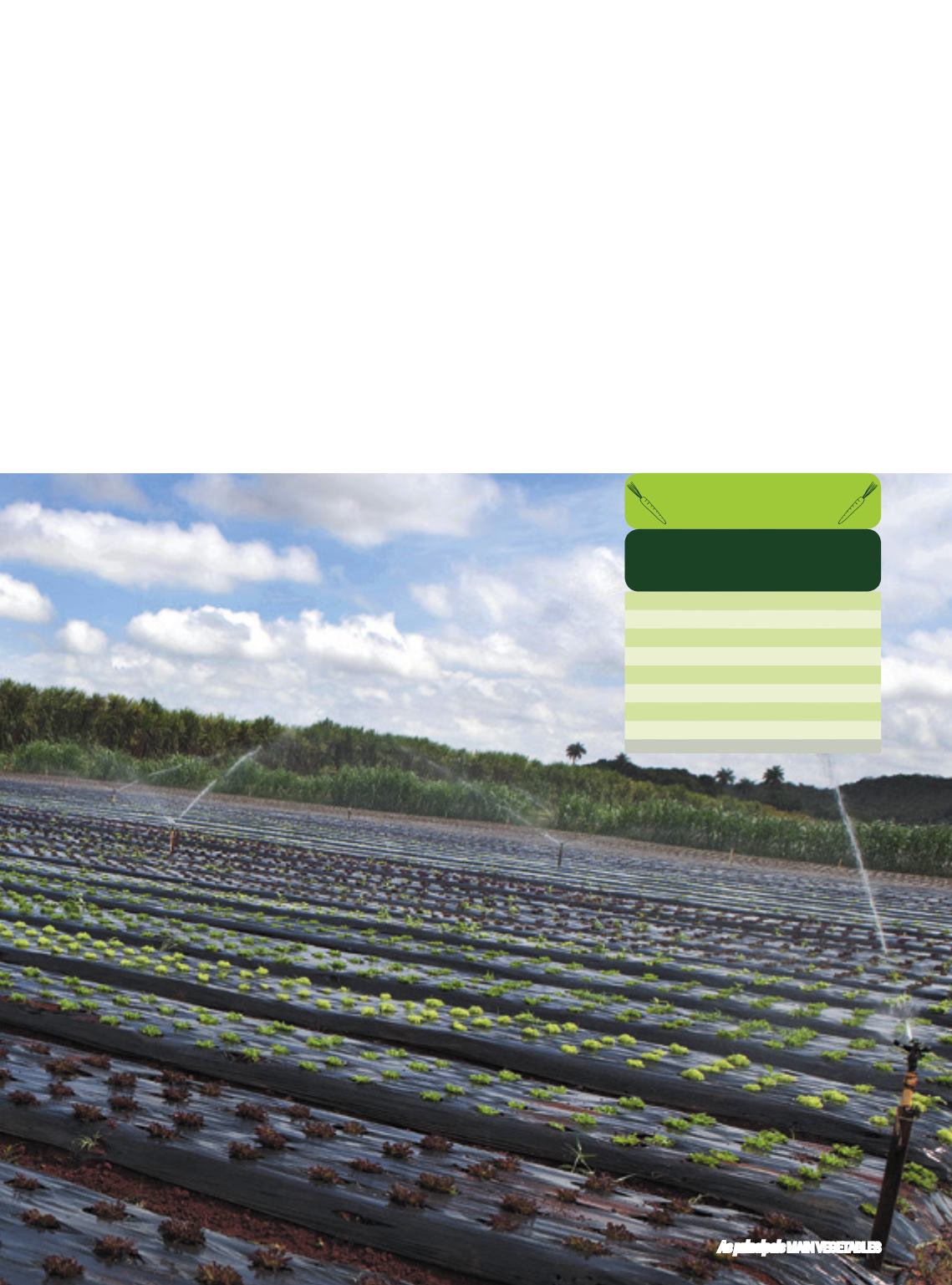
SOLUTIONS
In thewords of the researcher, investments in sustainability are essential for vegetable growers. More sustainable production systems, like the inclu-
sion of species (millet, crotalaria, mucuna and others) with soil enhancing properties, should be cultivated in rotation with leafy green vegetables. Trials
focused on direct planting of vegetables right after these cultures are underway. In the short and long run, these technologies have reduced soil erosion
and diminished the incidence of pests and weeds, besides adding organicmatter to the soil and enhancing its fertility levels. The use of sun shade cov-
ers for different leafy greens have attested to higher productivity rates for some species, whilst enhancing the quality of others during thewarmseason.
Scarce rainfall also adversely affects the production of leafy greens, and it happened in some regions in the State of São Paulo in 2014 and 2015.
Some producers in São Paulo reduced their planted areas because therewas not enoughwater for irrigation. A solution in the short run could consist in
drip irrigation, which saves water and is appropriate for fertilizer application, thus saving on labor costs. “In addition, the systemdelivers thewater close
to the plant and does not wet the surface of the leaves, thus reducing disease and weed problems”, Andréia explains.
As principais
MAINVEGETABLES
broccolis (2.2 thousand hectares) and kale
(1.3 thousand hectares). Only broccolis
suffered a planted area reduction from
the 2014 crop. Biggest increases occurred
with the cultivation of cabbage (433 hect-
ares) and lettuce (369 hectares).
“Due to low initial investments and short
term returns, the cultivation of leafy green
vegetables is strategic and important for fam-
ily farming”, says Andréia. She understands
that the real problem of the sector consists
in maintaining the normal productivity and
quality levels in summer, when warmweath-
er and excessive precipitation jeopardize the
plantations. Research is underway with the
aim to keep yields and quality at reasonable
levels during this period of the year, especial-
ly in regions where warm temperatures pre-
vail. “The consumption of leafy greens tends
to rise in the summer, with a positive impact
upon farmers’ income”, she observes.
51
AMOSTRA PAULISTA
Sample from São Paulo
Fonte:
Instituto de Economia Agrícola (IEA) de São Paulo.
Área plantada com cinco espécies
de hortaliças folhosas no
estado de São Paulo (SP)
2014
2015
Produto Área (ha)
Área (ha)
Alface
10.774,50 11.143,97
Repolho
5.516,83
5.950,32
Couve-flor
2.496,96
2.595,40
Brócolis
2.440,10 2.266,95
Couve
1.299,70 1.383,00
Total
22.528,09 23.339,64


